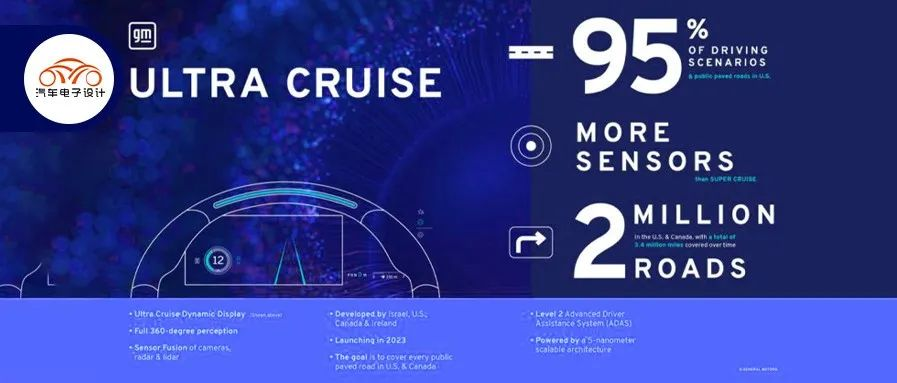General Motors Presented a Lot of New Releases at CES 2022, Including the Next Generation of Ultra Cruise
Based on current information, the new generation of advanced driving assistance system (ADAS) Ultra Cruise is scheduled to start deploying from 2023 (Cadillac Celestiq), which is based on Qualcomm’s Snapdragon Ride computing architecture, consisting of two Snapdragon SA8540P SoCs and one SA9000P AI accelerator. However, it is still positioned as an L2 level ADAS system in the promotion.
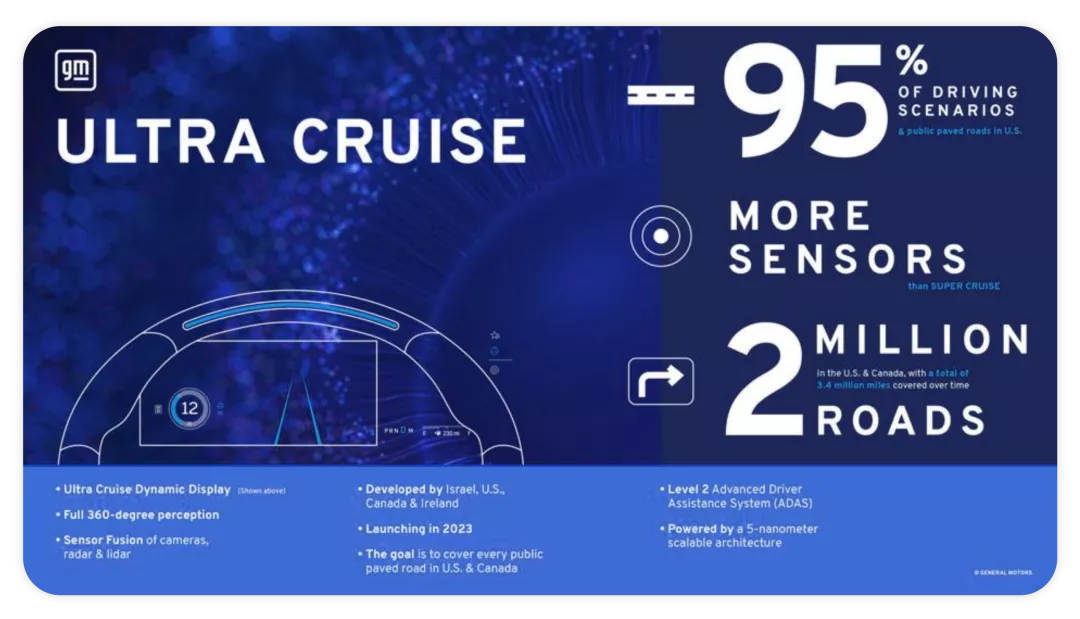
The Evolution of General Motors’ L2 ADAS
From a technical point of view, General Motors started importing L2 level systems very early and added high-precision maps during the Super Cruise era. From the overall perception configuration point of view, the combination of millimeter-wave radar and cameras actually has few defects. The key issue is still the configuration of the core processor.
Note: This External Object Calculating Module (EOCM) is an external object calculation module.
- EOCM Gen1: This one includes two dual-core 180MHz NXP processors, mainly processing external camera and radar results, and uses CAN as the bus.
- EOCM Gen2: This one starts to change. Not only does it use the 180MHz MCU, but it also adds iMX6. Although it is still named EOCM, it has actually started to do fusion.
- EOCM Gen3: This one improves the MCU and introduces the Tri-core TC297 series, with relatively less overall computing power.
From the above, it can be seen that General Motors was still in the project management stage for external perception algorithms during the EOCM era, relying on supplier-provided algorithms and results, and then performing fusion and calibration. I think with this generation of Ultra Cruise, General Motors actually enters the L2+ level, and can integrate a lot of knowledge and experience from Cruise Automation, integrating perception algorithms and iterations into their own hands.
Based on the Snapdragon SA8540P SoC and one SA9000P AI accelerator, it can perform over 300 trillion operations per second (TOPS) and continues to retain the single Infineon Aurix TC397 processor for functional safety.# Evolution of Ultra Cruise
As the automotive industry moves towards autonomous driving, it seems to be an easy decision for companies to make. However, the speed of evolution varies from enterprise to enterprise, and there is not a single global automobile company that is ready to hand over the soul of autonomous driving.
Of course, there are different methods, such as purchasing algorithms to embed into the entire software system, and then charging for the algorithm, which is also a way.
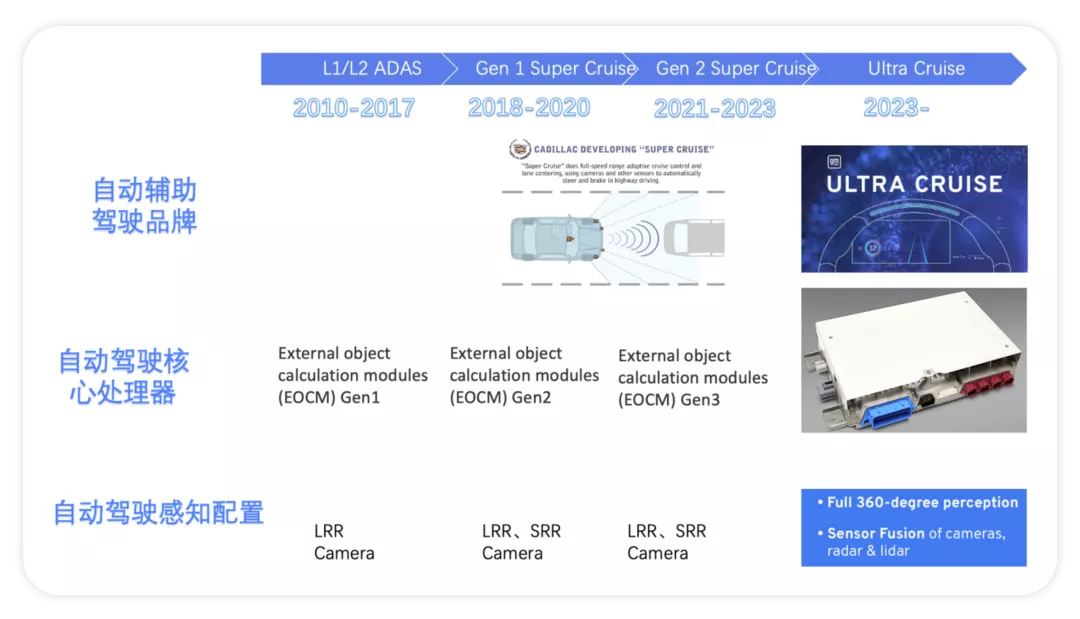
In the maintenance manual, ECOM is divided into LSOSM and RSOSM, as shown in the figure below.
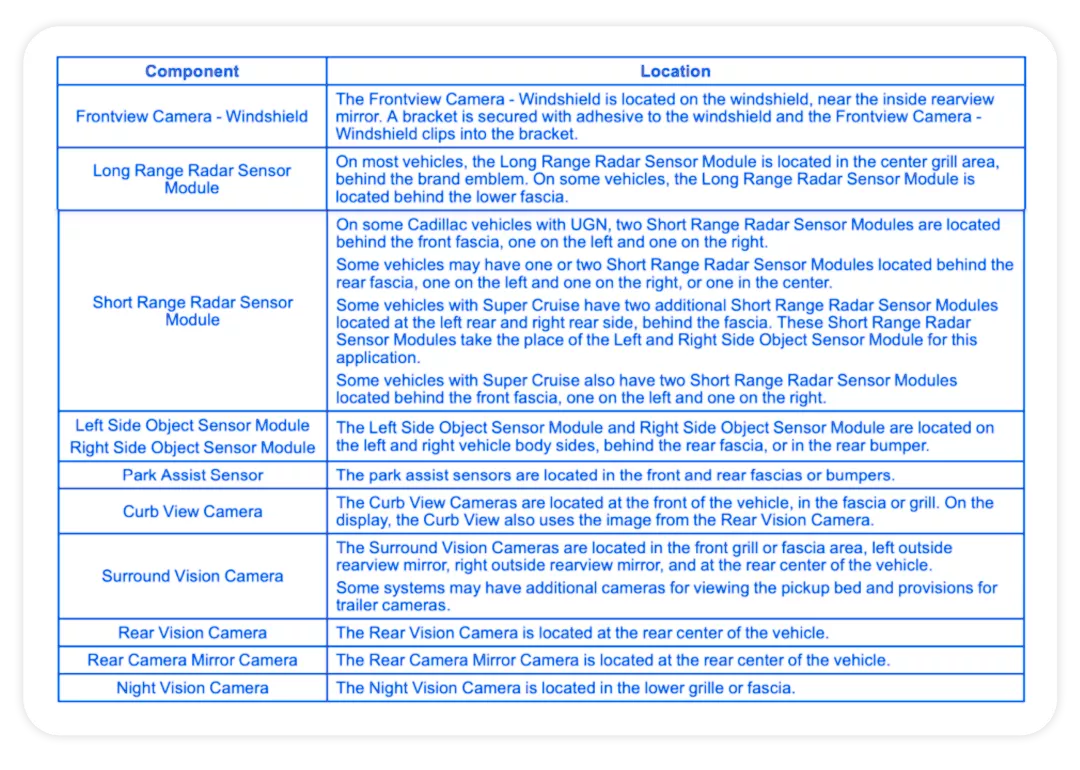
Due to the use of so many sensors, overall calibration is also a major issue, as shown below, which is quite difficult.
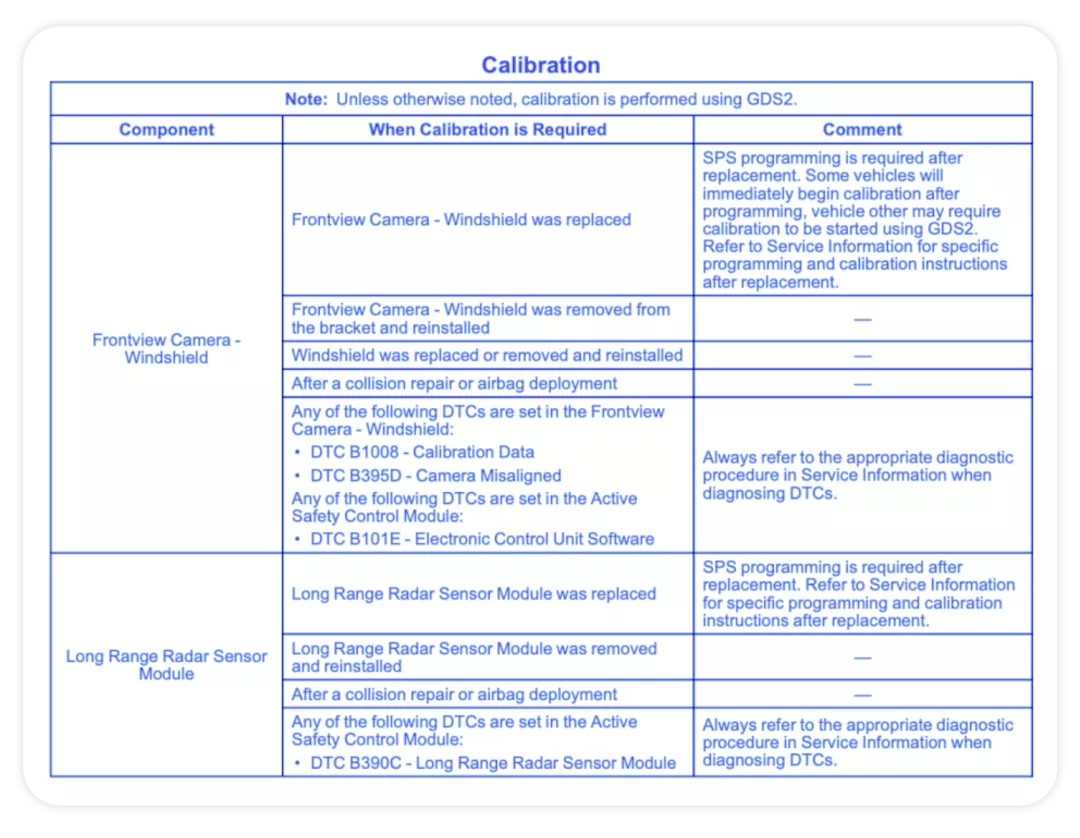
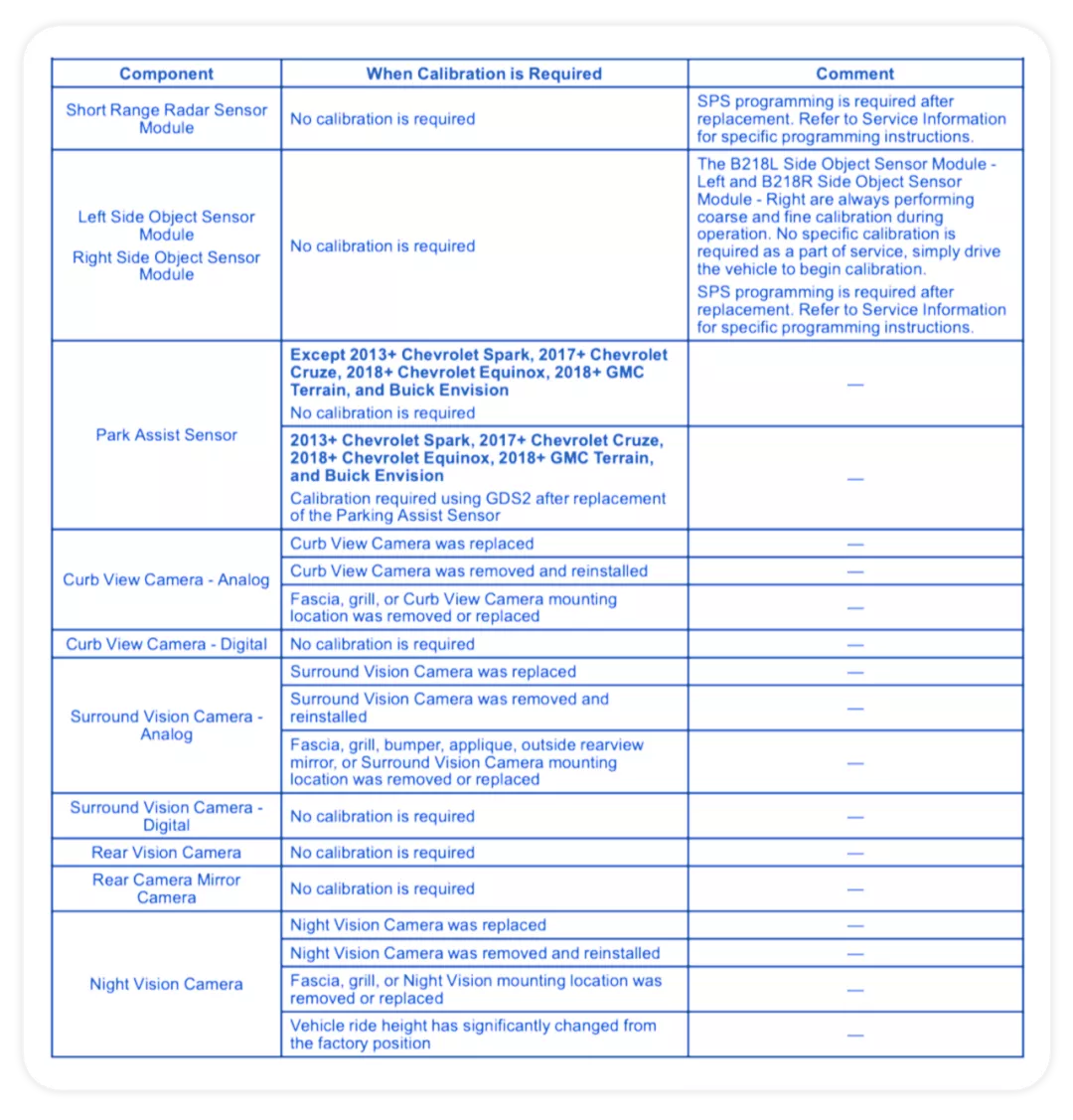
Note: The above information is taken from General Motors’ aftermarket document “Description and Operation Driver Assistance Systems Configuration Reference.”
Evolution of Ultra Cruise
How does Ultra Cruise differ from its predecessor, Super Cruise?
From current information, Ultra Cruise is designed for higher-end and luxury vehicle configurations, while Super Cruise is further integrated into more mainstream models.
Ultra Cruise’s goal is to cover more driving scenarios (ultimately in 95% of all driving scenarios in the United States and Canada); by 2023, it will cover 2 million miles of roads, and its ultimate goal is to cover more than 3.4 million miles.From the design intention of Ultra Cruise, in addition to highways (using high-precision maps), vehicle owners will be able to truly free their hands and travel through almost all roads, including city streets, subdivision streets, and well-traffic rural roads.
Note: It is really worth discussing how the high-precision maps are used in detail.
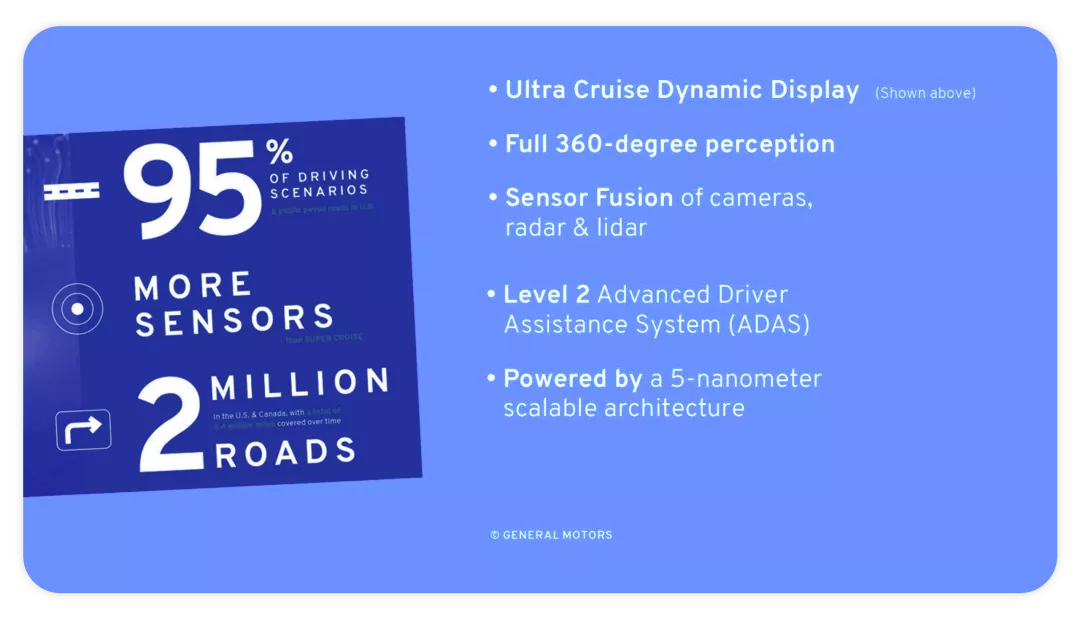
Building on the features of Super Cruise, Ultra Cruise has new autonomous driving assistance functions aimed at providing users with an experience based on the autonomous driving system. The new generation of cabins features dynamic displays.
- Corresponding measures for traffic lights and external warnings
- Follow internal navigation routes to keep moving forward
- Comply with speed limits
- Support automatic and on-demand lane changing
- Support left and right turns
- Support avoidance of nearby objects
- Support parking in residential driveways
The Ultra Cruise system also features 360-degree perimeter awareness. In addition, the system has integrated intelligent diagnostics and learning systems that automatically trigger data recording based on operating status. General Motors will also import these records into the backend data ecosystem for processing to continually improve the system.
Conclusion: I think that since 2020, most traditional automakers have begun to enter the development of autonomous driving software, truly entering the stage of talent accumulation, algorithm accumulation, and data accumulation in the perception algorithm level. Although the direction is clear, it still depends on the accumulation of each car company to really get this much work done. I am still looking forward to Ultra Cruise.
This article is a translation by ChatGPT of a Chinese report from 42HOW. If you have any questions about it, please email bd@42how.com.
